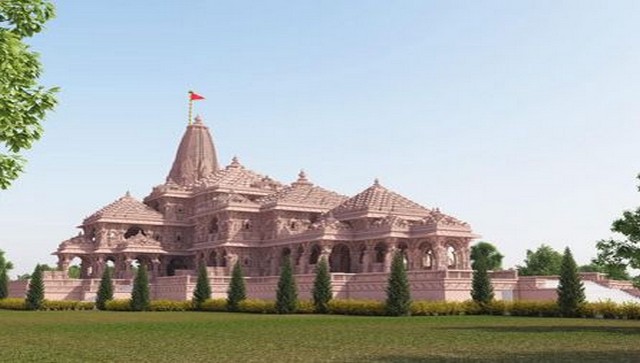India's Wonder: A glimpse of the upcoming Ram mandir in Ayodhya
The construction of the Ram temple in Ayodhya, which began after Prime Minister Narendra Modi laid its foundation stone in 2020, is 50 per cent complete. The project will cost Rs 1,800 crore
)
In 2019, the Supreme Court bench, headed by the then Chief Justice of India Ranjan Gogoi, delivered a landmark judgment and granted 2.77-acre of disputed land in Uttar Pradesh's Ayodhya to 'Ram Lalla'. In August 2020, Prime Minister Narendra Modi laid the foundation stone for the construction of the Ram temple. According to media reports, a trust called 'Shri Ram Janmabhoomi Teerth Kshetra' is bestowed with the responsibility of the construction of the temple. Almost 50 per cent of the temple's construction work is complete while more than 80 per cent of the plinth work is also done.
The trust, which was formed on the Supreme Court's order, has estimated a total cost of Rs 1,800 crore for the construction of the temple. In a meeting that was held in September, the trust also decided to make space for prominent Hindu seers and the main characters from the Ramayana period in the temple complex, according to a report by The Hindu. The construction is expected to conclude by December 2023 and Lord Ram is expected to be seated in the sanctum sanctorum by January 2024.
For the construction of the temple, around 4.75 lakh cubic feet of Rajasthan's Bansi Paharpur stone would be used. The Shri Ram Janmabhoomi Teerth Kshetra trust has employed around 1,200 artisans to carve the stones in Rajasthan as well as at a workshop run by the trust. According to a report by Hindustan Times, the quality of the stones and carvings is being regulated by experts at the National Institute of Rock Mechanics, Bangalore.
Some trust officials also mentioned that a huge foundation is being laid in the soil to ensure the longevity and stability of the temple. The sanctum sanctorum of the temple will be made of white marble acquired from the Makrana Hills in Rajasthan.
Apart from the construction of the temple, the Uttar Pradesh government has allocated an additional amount of Rs 797 crore for the beautification of the area around the Ram temple in Ayodhya. Roads around the area will also be broadened. This includes the construction of the Sahadatganj-Nayaghat main road to ensure better access to the temple.
The Yogi Adityanath government has set a deadline for the completion of the three pathways leading up to the Ram temple in Ayodhya. The 2-km long Ram Janmabhoomi Path from Sugriv Quila to Ram mandir will be the first to be completed and the deadline is March 2023. The other two pathways are the 850- meter-long Bhakti Path from Shringar Hat to Ram Janmabhoomi and the 13-km-long Ram Path.
According to media reports, devotees from across the country have donated huge amounts of gold and silver to the Shri Ram Janmabhoomi Tirath Kshetra Trust for the construction of the temple. The 44-day nationwide fund collective drive of the trust called the 'Shri Ram Janmabhoomi Ram Mandir Nidhi Samarpan Abhiyan' began in January last year.